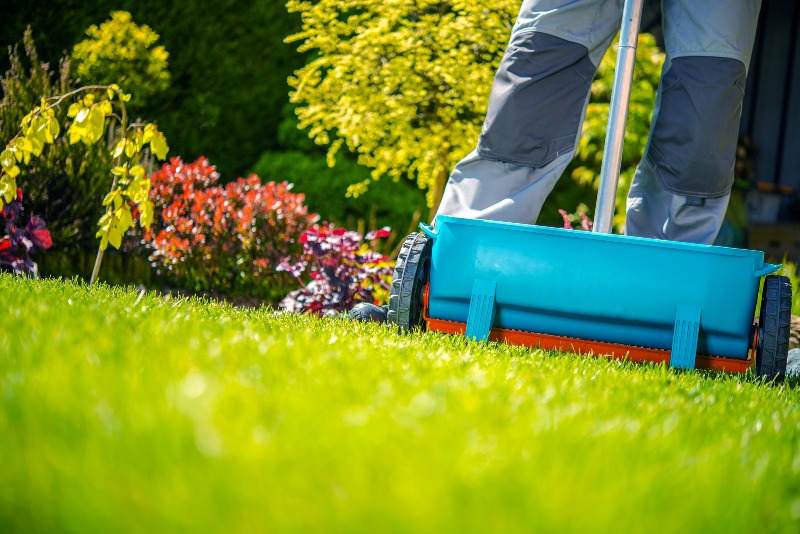One of the secrets to a vibrant and healthy-looking lawn is to use the right fertilizer during soil preparation. For a greener looking landscape, you want to make the fertilizer application at the right time to support healthy growth.
While there are other essential garden and lawn maintenance tips necessary for plants to do well, the use of fertilizers is one practice that never goes out of fashion. Still, many gardeners don’t think it is safe to use them often, especially for food crops. However, they could be of great benefit to the lawn owner, looking for shortcuts to growing a healthy bush.
When is the Best Time to Fertilize your Lawn?

Expert gardeners and farmers believe that soil improvement should begin at the onset of planting. So, whether you are planting grass, fruits, or vegetables, the best time to use fertilizer will be spring. Ideally, you want to do this towards the end when the roots are still developing. By so doing, the grass can withstand the rigorous process of growth.
Mid to late April is usually when spring sets in, so you should note this on your calendar. A quick spread during this period could quickly help with root development and propagation. A second application should be made four weeks after the first one. This should be around mid-May when the roots must have strengthened.
After the second application, you can wait every six weeks before your next use. It would be best if you did this till the end of October to prepare the soil for the cold winter months. For the first and second spring applications, you should make use of a quality organic fertilizer with the right amount of nutrients. You can make use of compost or manure for subsequent spreads.
Choosing the Right Fertilizer
You must use the right product if you want your grass to grow without any complications. Fertilizers could do more harm than good if you end up with the wrong product. That is why you want to ensure you get the best option for your lawn. When shopping for fertilizer, you want to keep a few things in mind. They include
Choose Organic

You should opt for brands that are non-toxic and free from chemical compounds that could do more harm than good. They are made from naturally occurring ingredients that are safe for both plants and the environment.
Get the Right Ratio
The nutrient ratio is something you should also keep an eye on. The minerals nitrogen (N), phosphorus (P), potassium (K) have to be in the right proportion. Of course, this will depend on the nature of the plant you are growing.
Consider your Grass
You should also keep in mind the type of grass you have on your lawn. For starters, most of the highly resilient lawn grasses like Centipede and St-Augustine can do with most types of fertilizers. But some others are highly selective.
Keeping a healthy lawn requires you to fertilize and water your turf at the right time. Late spring is the best period of the year to begin fertilizer application in your garden.
Gardening Dream
Tony Manhart is founder and editor in chief at Gardening Dream. Tony’s enthusiasm and rich experience in all things related to growing plants have led him to share his abundant knowledge with gardening aficionados all over the world. When he is not working around his own garden, Tony spends his time writing tips and tricks on a variety of subjects related to plant cultivation and soil maintenance.






